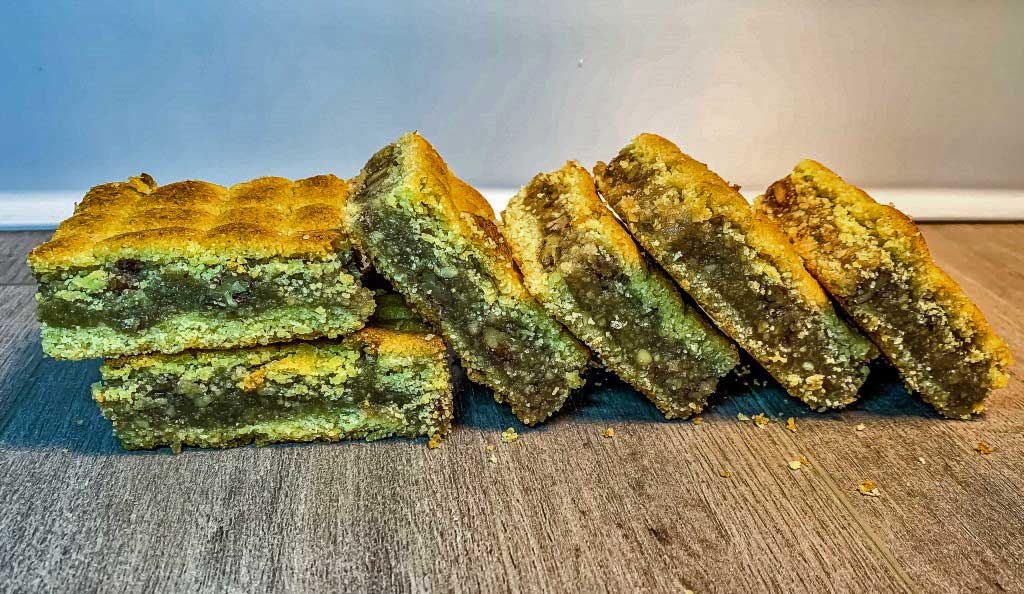Baklava is one of the most popular and delicious Greek desserts, and it is also an international favorite; there are variations of this sweet treat in many Middle Eastern and European countries. Lucky for me (and you), baklava may be the easiest dessert you will ever make. Truly, there is actually no way you can mess this up. Even if you tried, I don’t think you could ruin it. It is impervious to destruction. It is less baking and more assembling. If you were really committed, we suppose you could burn it, but then you might burn down your whole kitchen, and I don’t think it is worth it, just to prove me wrong. Now, I cant guarantee that yours will turn out as tasty as mine but I can assure you that
Commonly regarded as a Greek specialty, baklava is available in a wide range of local variations throughout Greece, both mainland and islands. It is also widely found in Turkish and many Arabic and Middle Eastern cultures. Baklava is generally served on special occasions, in many areas during religious ceremonies. Thus, Christians serve baklava at Christmas and Easter, Muslims eat it during Ramadan, and Jews often enjoy it as a Rosh Hashannah and Purim treat.
Cultural significance
A typical baklava, sweetened with syrup.
As a sweet, rich dish that requires time and expense in its preparation, baklava has generally been regarded in Greece as a dish reserved for special occasions. In some areas, baklava is the most important sweet served at weddings and is even taken to the church before the ceremony. In many regions, it is served at Christian celebrations such as Christmas, and at Easter when it is made with 40 sheets of phyllo dough representing the 40 days of Lent.
Balkava has become a traditional Middle Eastern Rosh Hashannah and Purim treat but is also enjoyed at celebrations throughout the year. Sephardim refrain from serving dark-colored pastries, such as those made from walnuts, on Rosh Hashannah, as that would portend a dark year. Blanched almonds are traditionally used in Rosh Hashannah baklava to produce a light color so that the year should be “sweet and bright.”
The origin of baklava has continued to be disputed since many ethnic groups claim this delicious, exotic dish as their own. Baklava was chosen to represent Cyprus in the presentation Sweet Europe of the cultural initiative Café Europe in 2006. This led to a “baklava war” proclaiming “Baklava is Turkish, we will not allow the Greek Cypriots to feed it to the world.”
Gaziantep, a city in Turkey, is famous for its baklava and, in Turkey, is widely regarded as the native city of the dessert. In 2008, the Turkish patent office registered a geographical indication certificate for Antep Baklava.
Preparation
Baklava is prepared on large trays and cut into a variety of shapes.
Baklava is basically layers of crisp phyllo dough (paper-thin sheets of raw, unleavened flour dough used for making pastries) alternated with a sugary spiced nut mixture, which includes walnuts, almonds, and possibly pistachios. The pastry is prepared on large trays, and melted shortening is poured on top. After baking, the whole thing is soaked in a fragrant sweet syrup made with honey, lemon, and cinnamon. Sweet and exotic, baklava is cut into small pieces of various shapes (triangles, squares, or diamonds) and cooled before serving.
The result is a dish so delicious that not only was it served to royalty but numerous ethnic groups claim it as their own. Baklava is an example of human ingenuity in developing food that not only nourishes the body but also brings happiness to the mind and spirit.

